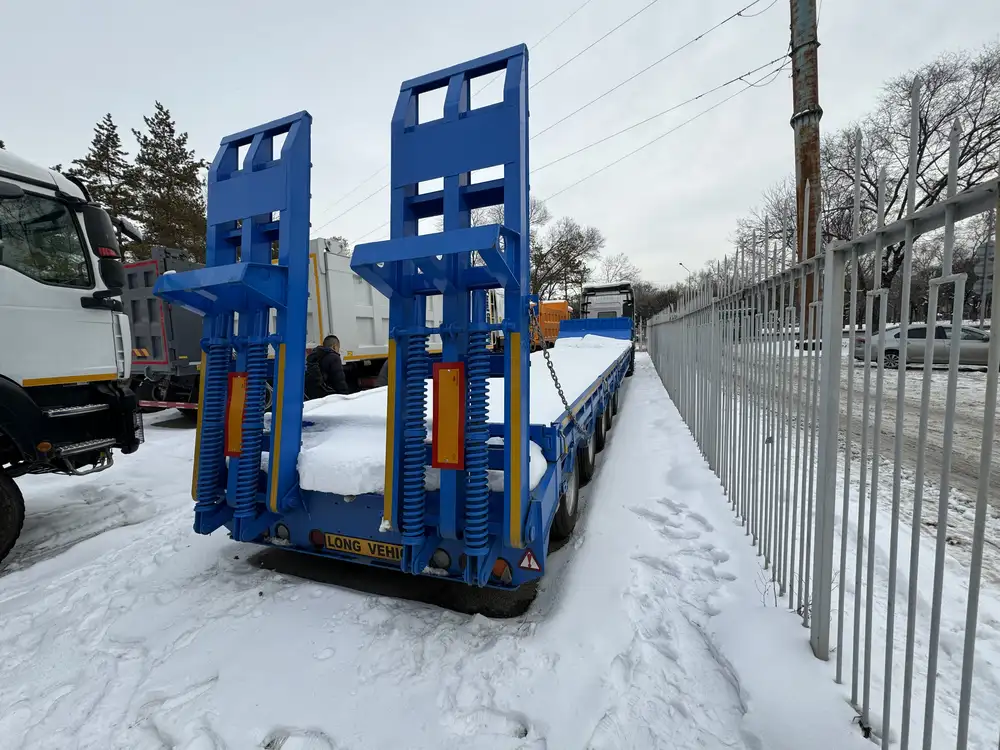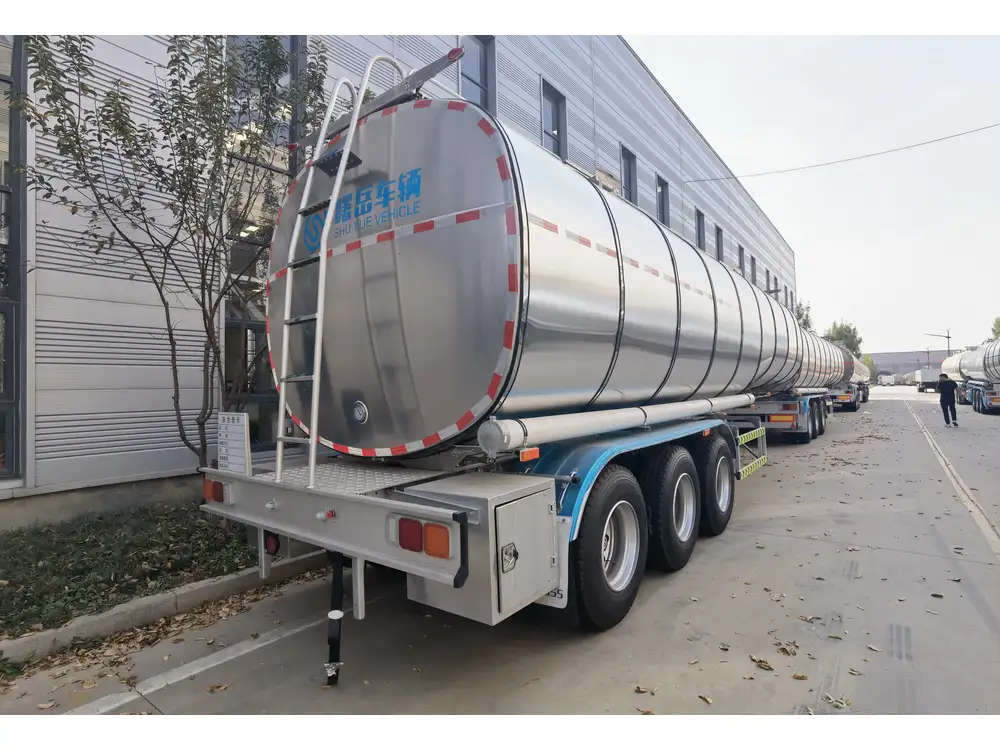When it comes to purchasing a used semi-trailer, understanding the costs involved can be quite challenging. The price of a used semi-trailer varies significantly based on multiple factors including make, model, age, condition, and additional features. In this article, we delve into these parameters, aiding potential buyers in making informed decisions. This detailed examination aims to clarify the complexities of used semi-trailer pricing, ultimately leading to a smarter purchase.
Factors Influencing the Price of Used Semi Trailers
To effectively determine how much a used semi-trailer costs, one must consider various dimensions. Below, we categorize these factors clearly.
1. Age and Condition of the Trailer
The price correlates strongly with the trailer’s age:
| Age Range | Average Price Range |
|---|---|
| 1-3 years | $30,000 – $50,000 |
| 4-6 years | $25,000 – $40,000 |
| 7-10 years | $15,000 – $30,000 |
| 10+ years | $5,000 – $15,000 |
Condition Assessment:
- Excellent Condition: Like new with minimal wear. Typically commands a premium price.
- Good Condition: Minor cosmetic wear but mechanically sound.
- Fair Condition: Requires some repairs; a lower price point may reflect the need for investment.
- Poor Condition: Significant repairs needed, often sold for parts or scrap.

2. Make and Model
Specific manufacturers and models hold their value differently based on market demand. For instance:
- Freightliner, Kenworth, and Peterbilt: Generally maintain higher resale values due to brand reputation and durability.
- Less Popular Brands: May depreciate more rapidly, leading to lower purchase prices.
3. Type of Trailer
Different types of trailers can have a vast range in pricing:
| Trailer Type | Average Price Range |
|---|---|
| Flatbed Trailers | $10,000 – $30,000 |
| Refrigerated Trailers | $20,000 – $50,000 |
| Dry Vans | $15,000 – $40,000 |
| Tank Trailers | $20,000 – $35,000 |
Specific Features and Customizations
Special features such as air-ride suspensions, specific load capacities, and enhanced insulation can add to the cost. Buyers should weigh these options based on their operational needs.

4. Market Trends and Geographic Variations
The semi-trailer market is susceptible to economic shifts, impacting pricing. Additionally, local markets may show variance based on demand and availability. For instance:
- Urban Areas: Higher prices due to demand and proximity to transport routes.
- Rural Areas: Prices may be lower, but selection could be limited.
5. Additional Costs to Consider
When budgeting for a used semi-trailer, remember to factor in additional costs such as registration, insurance, and potential repairs.
Table of Additional Costs:
| Cost Category | Estimated Cost |
|---|---|
| Registration Fees | $300 – $500 |
| Insurance Premiums | $1,200 – $2,500 annually |
| Maintenance & Repairs | $500 – $3,000 annually |
Total Estimate: When contemplating the purchase, consider an additional 15-20% over the price of the trailer to cover these associated costs.

Where to Buy Used Semi Trailers
Finding the right semi-trailer involves exploring various purchasing avenues. Each option presents unique advantages and disadvantages.
1. Online Marketplaces
Platforms such as eBay, TruckPaper, and Equipment Trader offer extensive listings.
Advantages:
- Diverse selection with competitive pricing.
- Easy comparisons among various sellers.
Disadvantages:
- Potential for misrepresentation; in-person inspections are crucial.
2. Dealerships
Buying from a reputable dealership can be more reassuring, providing warranties and post-sale support.
Advantages:
- Access to a curated selection of used trailers.
- Professional advisement on suitable choices.
Disadvantages:
- Typically higher prices than private sales due to added services.

3. Auctions
Purchasing at auctions can yield extraordinary savings, but comes with inherent risks.
Advantages:
- Potential for significant deals.
- Immediate sale process.
Disadvantages:
- Limited opportunity for inspection.
- Competitive bidding can escalate prices unexpectedly.
4. Private Sellers
Purchasing directly from an owner can sometimes result in cost savings, but be cautious.
Advantages:
- Opportunity for negotiation.
- Potentially lower costs.
Disadvantages:
- Limited recourse if issues arise post-purchase.
- Verification of the trailer’s operational status is crucial.
How to Assess a Used Semi Trailer
The process of evaluating a used semi-trailer requires a careful approach. Below are critical steps to ensure a sound investment.

1. Inspect the Trailer Thoroughly
Conduct a detailed inspection, checking for:
- Structural Integrity: Look for cracks and signs of past repairs.
- Brake Condition: Examine brake pads and fluids for wear.
- Tires: Assess tread depth and sidewall integrity. Replace if necessary.
- Lights and Wiring: Verify functionality and look for frayed wires.
2. Request Maintenance Records
Ask the seller for a detailed history of maintenance and repairs. Regular servicing can indicate a well-cared-for trailer, which may reduce future repair costs.
3. Consider a Professional Inspection
If uncertain, hiring a professional mechanic who specializes in trailers can provide nuanced insights and save potential expenses down the line.

4. Test Drive
If possible, take the trailer for a test drive. This will help you assess its handling and responsiveness, ensuring it meets your operational expectations.
Financing Options for Used Semi Trailers
Exploring financing can ease the burden of an upfront payment. Here are several options to consider:
1. Traditional Loan
Bank loans typically offer fixed interest rates and structured repayment plans. Best suited for those with strong credit histories.

2. Equipment Financing
Specialized loans designed for purchasing business equipment. Often secured by the trailer itself, which may yield lower down payment options.
3. Leasing
If long-term purchasing isn’t feasible, consider a lease. This option allows for using the trailer while paying monthly fees, providing an opportunity to purchase at the lease’s conclusion.
Conclusion
Determining how much a used semi trailer costs is a multifaceted endeavor influenced by numerous considerations, from the trailer’s age to market fluctuations. By comprehensively evaluating these factors, buyers can better navigate the semi-trailer market and make informed purchasing decisions. Whether assessing trailer types, purchasing channels, or financing options, preparation is key to addressing all pertinent issues.
Armed with this knowledge, potential buyers will be well-equipped to embark on their journey towards acquiring a used semi-trailer. Ultimately, the goal is to achieve the right balance between cost, functionality, and reliability—ensuring a significant return on investment in the logistics landscape.



